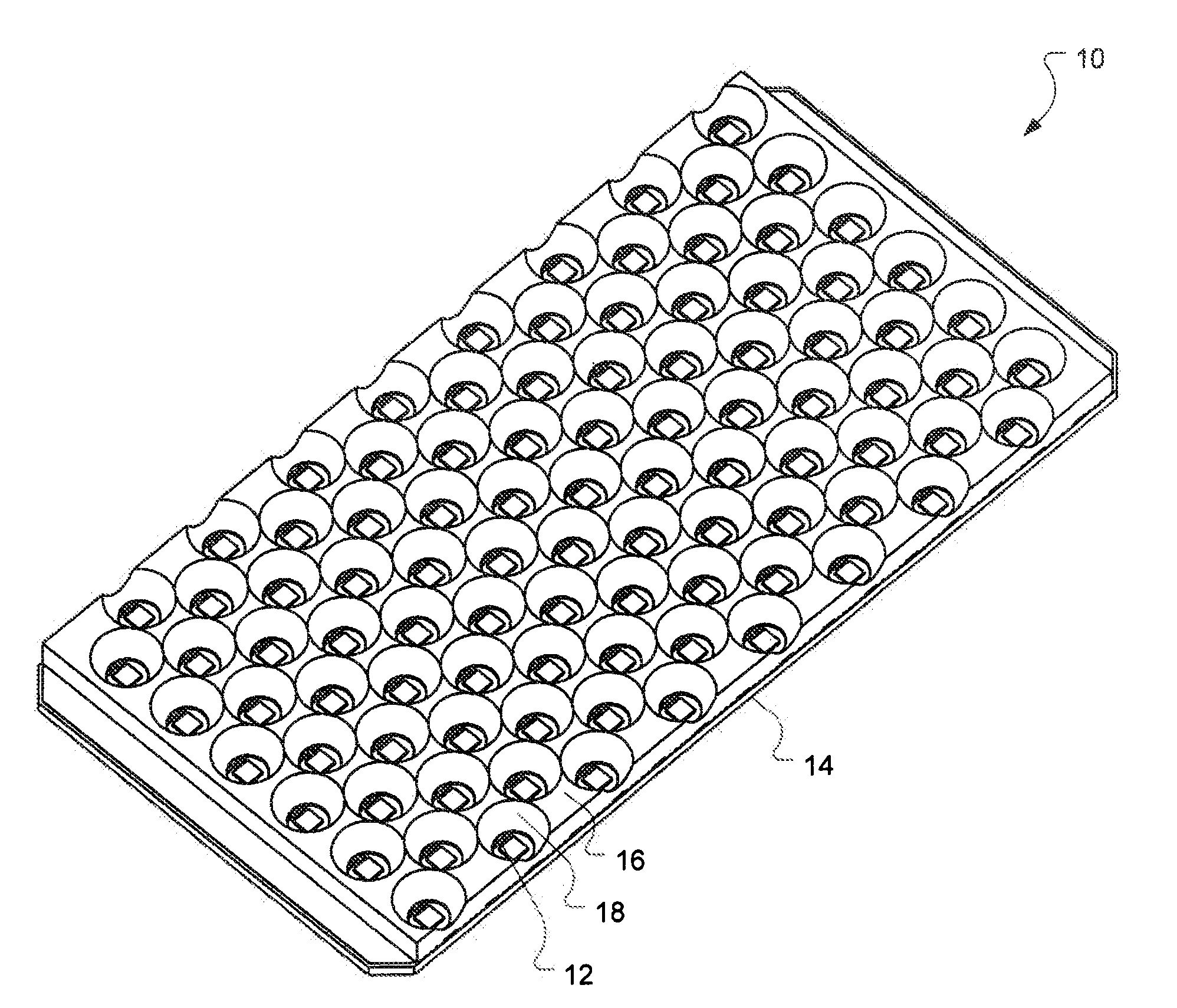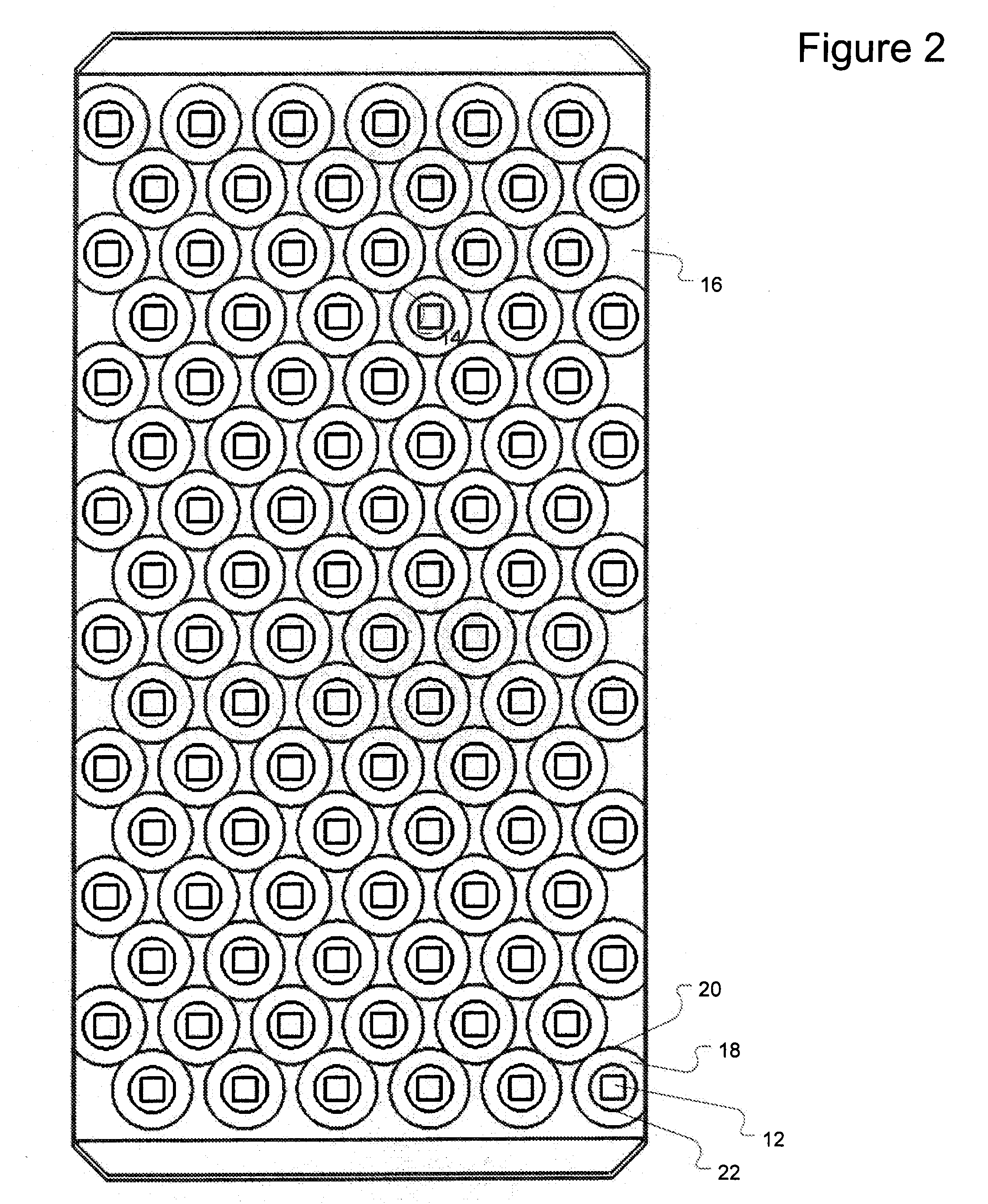Economical partially collimating reflective micro optical array
a micro-optical array and reflective technology, applied in the direction of discharge tube luminescnet screens, semiconductor devices for light sources, lighting and heating apparatus, etc., can solve the problems of non-uniform polymerization at the target, reducing the irradiance of the plurality, and falling to a level that is not sufficient to achieve the desired degree of polymerization
- Summary
- Abstract
- Description
- Claims
- Application Information
AI Technical Summary
Problems solved by technology
Method used
Image
Examples
Embodiment Construction
FIG. 1 shows a perspective view of a lighting module 10. The lighting module 10 includes a substrate 14 upon which individual light emitting elements 12 are arranged in an x-y grid. Examples of individual light emitting elements include light emitting diodes, including organic light emitting diodes (OLEDs). Generally, these light emitting elements are arranged on the substrate with the appropriate lines to provide power and control of the elements.
A reflector plate 16 is then attached to the substrate 14. The reflector plate 16 is a material which has an array of openings such as 18 that act as reflector cups for each light emitting element 12. The array of openings is arranged so that there is one opening for each light emitting element. Generally, the reflector plate is manufactured so the light emitting elements are centered in each opening and the shape of the opening is controlled to achieve the desired modification to the emission pattern of light from the light emitting eleme...
PUM
 Login to View More
Login to View More Abstract
Description
Claims
Application Information
 Login to View More
Login to View More - R&D
- Intellectual Property
- Life Sciences
- Materials
- Tech Scout
- Unparalleled Data Quality
- Higher Quality Content
- 60% Fewer Hallucinations
Browse by: Latest US Patents, China's latest patents, Technical Efficacy Thesaurus, Application Domain, Technology Topic, Popular Technical Reports.
© 2025 PatSnap. All rights reserved.Legal|Privacy policy|Modern Slavery Act Transparency Statement|Sitemap|About US| Contact US: help@patsnap.com



